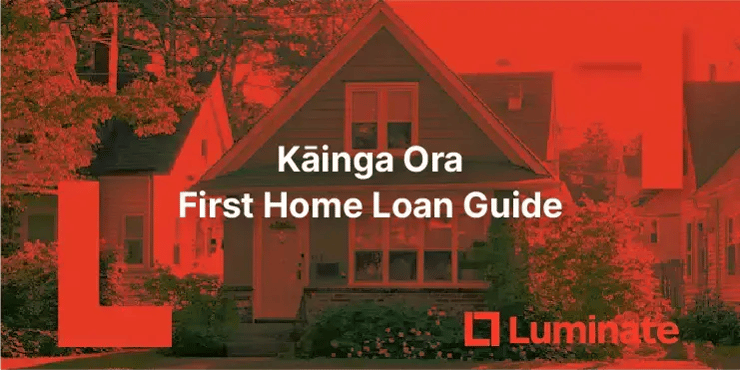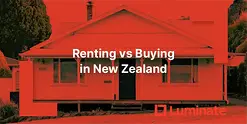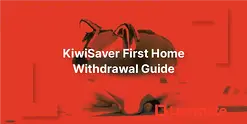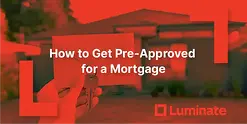Kāinga Ora First Home Loan: Complete Guide for NZ Buyers in 2025
 By
Trent Bradley
·
17 minute read
By
Trent Bradley
·
17 minute read

For many aspiring homeowners in New Zealand, saving a 20% deposit feels like an insurmountable challenge. Property prices continue to rise faster than most people can save, creating a frustrating gap between the dream of homeownership and the financial reality of getting there.
The Kāinga Ora First Home Loan allows eligible New Zealand first-home buyers to purchase with just 5% deposit. Income limits are $95,000 (single) or $150,000 (couple), with regional house price caps ranging from $400,000 to $950,000. Available through 7 participating lenders including Westpac, Co-operative Bank, and SBS Bank.
Table of Contents
- What Is the Kāinga Ora First Home Loan?
- Key Features of the Kāinga Ora First Home Loan
- Comprehensive Eligibility Requirements
- How to Apply: Complete Step-by-Step Process
- Am I Eligible? Quick Self-Assessment Checklist
- Combining with KiwiSaver: Maximum Impact Strategy
- Kāinga Ora First Home Loan vs. Standard Low-Deposit Lending
- What to Watch Out For: Important Considerations
- Frequently Asked Questions About Kāinga Ora First Home Loan
- Final Thoughts
Key Takeaways
- Buy with just 5% deposit through the government-backed Kāinga Ora First Home Loan—for a $600,000 home, that's only $30,000 instead of the $120,000 (20%) required by traditional lending, allowing you to enter the market years earlier than saving a full deposit independently
- Income limits are $95,000 for singles or $150,000 for couples, ensuring the scheme helps those who genuinely need support rather than high-income buyers choosing to save less—these caps are gross (before-tax) income and are reviewed regularly with possible regional variations
- Regional price caps vary dramatically from $400,000 in rural areas to $950,000 in Queenstown—Auckland sits at approximately $875,000, Wellington at $650,000, and Christchurch at $550,000, with caps reviewed annually so always verify current limits on the Kāinga Ora website before house hunting
- Only 7 lenders participate in the scheme (Westpac, Co-operative Bank, SBS Bank, Unity, NZCU Baywide, Nelson Building Society, and First Credit Union)—major banks like ANZ, ASB, and BNZ don't offer it, meaning you may need to build relationships with less familiar lenders who specialize in first-home buyers
- Combine seamlessly with KiwiSaver withdrawal to maximize impact—after three years of contributions, withdraw your balance minus $1,000 to form most or all of your 5% deposit requirement, with many buyers using this powerful combination to purchase with $35,000-$60,000 total instead of needing $140,000+
- No low equity fee from Kāinga Ora itself, unlike standard bank low-deposit lending which charges $500-$2,000+—interest rates are generally comparable to standard loans though some lenders may add a small premium (0.25%-0.50%) for the higher risk of low-deposit lending
- Must live in the property as your primary residence for at least 6 months—this is strictly for owner-occupied homes, not investments, and you must move in within 6 months of settlement and remain there continuously, with life changes requiring immediate lender contact rather than breaching the agreement
The Kāinga Ora First Home Loan is a government-supported initiative specifically designed to address this challenge. It enables eligible buyers to purchase a home with as little as 5% deposit, helping people who have good income and stable employment—but limited savings—take that critical first step into homeownership.
At Luminate Financial Group, we work with first-home buyers navigating this scheme every day. This comprehensive guide explains exactly how the Kāinga Ora First Home Loan works, who qualifies, the application process, and what you need to be aware of before applying.
What Is the Kāinga Ora First Home Loan?
The Kāinga Ora First Home Loan is a standard home loan offered by selected lenders but backed by a government guarantee through Kāinga Ora (formerly known as Housing New Zealand). This government backing is the key difference that makes low-deposit lending possible.
How the Government Guarantee Works
In traditional lending, banks view loans with less than 20% deposit as high risk. If property values decline or the borrower defaults, the bank could lose money. This risk makes banks reluctant to lend with small deposits.
With the First Home Loan, Kāinga Ora acts as guarantor, essentially telling the lender: "If this borrower can't repay and you lose money, we'll cover part of your loss." This government backing reduces the lender's risk, enabling them to accept deposits as low as 5%.
Important clarification: While Kāinga Ora provides the guarantee, the loan itself is issued and serviced by participating banks and non-bank lenders. You won't be dealing with Kāinga Ora directly for day-to-day loan matters—that's handled by your chosen lender.
Who Benefits Most?
This scheme is particularly valuable for people who:
- Have stable employment and good income
- Demonstrate strong financial management and savings discipline
- Have a solid credit history
- Simply haven't had enough time to save a full 20% deposit
- Are being priced out of the market as they try to save
It's designed for those who can genuinely afford the repayments but are held back by the deposit hurdle alone.
Key Features of the Kāinga Ora First Home Loan
Minimum Deposit: Just 5%
The standout feature is the ability to purchase with only 5% deposit. For a $600,000 home, that's just $30,000 compared to $120,000 (20%) required by traditional lending.
Available Through Select Lenders
Not all banks participate in the scheme. As of 2025, participating lenders include:
- Westpac
- The Co-operative Bank
- SBS Bank
- Unity
- NZCU Baywide
- Nelson Building Society (NBS)
- First Credit Union
Each lender has their own specific criteria, interest rates, and loan products within the First Home Loan framework.
Standard Interest Rates Apply
Interest rates are generally comparable to standard home loans from the same lender. However, some lenders may add a small premium (typically 0.25%-0.50%) to reflect the higher risk of low-deposit lending.
The positive news: Kāinga Ora itself doesn't charge a low equity fee, unlike standard bank low-deposit lending which often includes substantial fees ($500-$2,000+).
Owner-Occupied Properties Only
This loan is strictly for properties you'll live in as your primary residence. Investment properties, holiday homes, or properties you intend to rent out don't qualify.
Income and Price Caps Apply
To ensure the scheme helps those who genuinely need support (rather than high-income buyers choosing to save less), there are caps on both buyer income and property prices. These caps vary by region and are reviewed periodically.
Flexible Loan Structure
Once approved, you can typically choose between:
- Fixed interest rates (1-5 years)
- Floating interest rates
- Split structures (part fixed, part floating)
The loan structure options are similar to standard home loans, giving you flexibility to match your financial strategy and risk tolerance.
Comprehensive Eligibility Requirements
Meeting the eligibility criteria is essential. Here's exactly what you need to qualify:
1. Citizenship and Residency
You must be:
- A New Zealand citizen, OR
- A New Zealand permanent resident, OR
- Hold a resident visa that entitles you to remain in New Zealand indefinitely
Temporary work visas or student visas don't qualify, even if you have substantial income and savings.
2. First-Home Buyer Status
The basic rule: You cannot currently own any property—residential, investment, or otherwise.
The exception: If you previously owned a home but are now in a similar financial position to a first-home buyer, you may qualify as a "second-chance buyer." Kāinga Ora assesses these cases individually based on:
- How long since you owned property (typically 3+ years)
- Your current financial circumstances
- Reasons for no longer owning property
- Whether you genuinely need the scheme's support
Important note: If you currently own an investment property, even if you've never owned a home you lived in, you won't qualify. The scheme is for genuine first-home buyers only.
3. Income Limits
Your gross (before-tax) annual income must fall within these caps:
Single applicant: $95,000 or less Two or more applicants (couples, groups): $150,000 or less combined
What counts as income:
- Salary and wages
- Regular overtime or shift allowances
- Self-employment income (assessed conservatively)
- Regular bonuses (if consistent and ongoing)
- Rental income from boarders (if applicable and documented)
What doesn't count:
- One-off bonuses or windfalls
- Government benefits or assistance
- Irregular or unpredictable income sources
Regional variations: Some high-cost regions (particularly Auckland and Queenstown) may have higher income caps. Check the current Kāinga Ora guidelines for your specific area.
4. Property Price Caps by Region
The property you purchase must be at or below the price cap for that region. These caps are reviewed regularly (typically annually) and vary significantly:
| Region | Approximate Price Cap (2025) |
|---|---|
| Auckland | $875,000 |
| Wellington | $650,000 |
| Christchurch | $550,000 |
| Hamilton | $600,000 |
| Tauranga | $750,000 |
| Dunedin | $500,000 |
| Palmerston North | $500,000 |
| Nelson/Tasman | $650,000 |
| Queenstown-Lakes | $950,000 |
| Napier/Hastings | $550,000 |
| New Plymouth | $550,000 |
| Rotorua | $550,000 |
| Invercargill | $400,000 |
| Whangarei | $650,000 |
| Provincial/Rural Areas | $450,000 - $550,000 |
Critical: These figures are approximate and subject to change. Always verify the current cap on the Kāinga Ora website before committing to a property search in a specific area.
5. Minimum 5% Deposit Requirement
You must have at least 5% of the purchase price as genuine deposit. This can come from:
Acceptable sources:
- KiwiSaver withdrawal (balance minus $1,000)
- Personal savings in your bank accounts
- Family gifts (non-repayable, documented, verified)
- Developer cashbacks for new builds (with lender approval)
Unacceptable sources:
- Borrowed money (credit cards, personal loans)
- Funds you're expected to repay
- Unverified or suspicious deposits
- Money that appears suddenly without explanation
Lenders will scrutinize your deposit sources carefully. All funds must be legitimate and properly documented.
6. Intent to Occupy
You must:
- Intend to live in the property as your primary residence
- Move into the property within a reasonable timeframe after settlement (typically within 6 months)
- Reside there for at least 6 months continuously
Why this matters: If you rent out the property immediately after purchase or don't move in, you're breaching the loan agreement. This could result in the loan being recalled or legal consequences.
Life changes: If your circumstances change unexpectedly (job relocation, relationship breakdown, health issues), contact your lender immediately to discuss your options rather than breaching the agreement.
How to Apply: Complete Step-by-Step Process
Applications are made directly through participating lenders, not through Kāinga Ora. Here's the complete process:
Phase 1: Pre-Application Preparation (2-4 weeks)
Step 1: Confirm your eligibility Use the self-assessment checklist in the next section to verify you meet all basic requirements. Don't waste time applying if you clearly don't qualify.
Step 2: Check the price cap for your target area Visit the Kāinga Ora website to confirm current price caps. This determines where you can realistically buy and at what price point.
Step 3: Calculate your deposit capacity Add up all available deposit sources:
- KiwiSaver balance minus $1,000
- Current savings and term deposits
- Confirmed family gifts (get written confirmation)
- Potential developer cashbacks if buying new
If you have 5% for a property within your regional cap, you're in a position to proceed.
Step 4: Gather required documentation Collect all necessary paperwork:
Income verification:
- 3 months of recent payslips
- Employment contract or letter
- Last 2 years of tax returns (if self-employed)
- Proof of any additional income sources
Financial records:
- 3-6 months of bank statements (all accounts)
- KiwiSaver balance statement
- Details of existing debts (credit cards, loans, HP)
- Proof of current rent or board payments
Identification:
- Passport or driver license
- Proof of address (rates bill, utility bill)
- Birth certificate or citizenship documents
Having everything organized speeds up the process significantly.
Phase 2: Lender Selection and Pre-Approval (1-3 weeks)
Step 5: Choose a participating lender Research the available lenders or work with a mortgage adviser who has access to all of them. Consider:
Interest rates: Compare current rates and any special offers
Lending criteria: Some lenders are stricter than others about credit history, employment type, or property standards
Customer service: Read reviews and ask about their support for first-home buyers
Processing times: Some lenders are faster than others
Relationship banking: If you already bank with a participating lender, that may simplify the process
Luminate tip: A mortgage adviser with First Home Loan experience can match you with the lender most likely to approve your application and offer favorable terms.
Step 6: Submit pre-approval application Apply through your chosen lender. They'll assess:
- Your income and employment stability
- Your expenses and spending patterns
- Your existing debts and credit commitments
- Your credit history (any defaults, missed payments, bankruptcies)
- Your deposit sources and savings history
Be honest and thorough. Any inconsistencies or omissions can delay or derail your application.
Step 7: Receive pre-approval (conditional approval) If approved, you'll receive confirmation of:
- How much you can borrow
- The interest rate (indicative)
- Any special conditions or requirements
- The validity period (typically 60-90 days)
Important: Pre-approval is conditional and doesn't guarantee final approval. The lender still needs to assess the specific property you want to buy.
Phase 3: Property Search and Offer (Timeline varies)
Step 8: Find a suitable property Armed with pre-approval, start your property search. Look for properties that:
- Are priced within the regional cap (ideally with some buffer)
- Fit your actual budget (remember all the additional costs)
- Meet standard lending criteria (good condition, no major structural issues)
- Are in locations with good long-term prospects
- Suit your living needs and lifestyle
Work with real estate agents who understand First Home Loan buyers and price caps.
Step 9: Make a conditional offer When you find the right property, make an offer including these essential conditions:
Finance condition: Specifically worded for First Home Loan approval (not just standard finance approval)
Building inspection condition: Allows you to have the property professionally inspected
LIM report condition: Gives you time to review council records
KiwiSaver withdrawal condition: If applicable, ensures funds will be available
Settlement period: Typically 6-8 weeks to allow time for all processes
Never go unconditional immediately, no matter how competitive the market. These conditions protect you.
Phase 4: Due Diligence and Formal Approval (2-4 weeks)
Step 10: Complete building inspection Book a qualified building inspector immediately after your offer is accepted. Attend the inspection if possible to:
- Understand the property's condition firsthand
- Ask questions about any issues
- Get recommendations for maintenance or repairs
The report will reveal:
- Structural integrity
- Weathertightness issues
- Maintenance requirements
- Potential future costs
- Any deal-breaking defects
If major issues emerge: Negotiate with the seller for repairs, price reduction, or consider walking away if problems are too severe.
Step 11: Review LIM report Your lawyer orders this from the local council. It contains:
- Building consent history
- Code compliance certificates (or lack thereof)
- Zoning information
- Known hazards or restrictions
- Rates arrears
- Any council notices or orders
Red flags to discuss with your lawyer:
- Unconsented building work
- Consents without sign-off
- Land subject to hazards
- Zoning that restricts future development
Step 12: Apply for KiwiSaver withdrawal (if applicable) Your lawyer handles this application to your KiwiSaver provider. Required documents include:
- Copy of the sale and purchase agreement
- Proof of first-home buyer status
- Confirmation the property meets KiwiSaver criteria
Timeline: Allow 10-15 business days for processing. Start this early (2-3 weeks before intended settlement).
Step 13: Lender completes property valuation The lender arranges a registered valuation to:
- Confirm the property's market value
- Ensure the purchase price is reasonable
- Verify the property meets lending standards
If valuation comes in low: You may need to negotiate a lower purchase price, increase your deposit, or find additional funds to bridge the gap.
Step 14: Receive formal loan approval Once the lender has reviewed:
- Building inspection report
- LIM report
- Property valuation
- All your financial documentation
- Final credit checks
They issue formal approval with final loan terms, interest rate confirmation, and settlement instructions.
This is your green light to proceed. Don't go unconditional before receiving formal written approval.
Phase 5: Settlement Preparation (1-2 weeks)
Step 15: Arrange home insurance Contact insurance companies to:
- Get quotes (compare at least 2-3 insurers)
- Ensure coverage starts on settlement day
- Verify the sum insured covers full replacement value
- Provide proof to your lender (mandatory before they release funds)
Budget: $1,000-$2,500 annually depending on property and location.
Step 16: Review and sign loan documents Your lender provides final documentation including:
- Loan agreement
- Security (mortgage) documents
- Terms and conditions
- Repayment schedule
Review everything carefully with your lawyer before signing. Ask about anything you don't understand.
Step 17: Go unconditional Once you have:
- Formal loan approval in writing
- Satisfactory building inspection results
- Acceptable LIM report
- Home insurance arranged
- KiwiSaver withdrawal confirmed (if applicable)
Instruct your lawyer to remove all conditions from your offer. The purchase is now binding.
Step 18: Prepare for settlement In the final days before settlement:
- Coordinate with movers
- Arrange utility connections (power, gas, water, internet)
- Change your address with banks, employers, government agencies
- Prepare to pay any remaining costs (lawyer fees, etc.)
- Organize the logistics of moving day
Phase 6: Settlement and Move-In
Step 19: Settlement day Your lawyer manages the settlement process:
- Your deposit funds (from savings, KiwiSaver, gifts) combine with your loan amount
- The total transfers to the seller's lawyer
- The property title transfers to your name
- You receive the keys!
This typically happens mid-morning on settlement day, though timing varies.
Step 20: Move in and meet residency requirements Remember your obligations:
- Move into the property within 6 months of settlement
- Live there as your primary residence
- Reside there for at least 6 months continuously
Keep records of when you moved in (utility connection dates, mail redirections, etc.) in case you ever need to demonstrate compliance.
Am I Eligible? Quick Self-Assessment Checklist
Use this checklist to determine if you likely qualify:
Citizenship & Residency
- ☐ I am a New Zealand citizen, permanent resident, or hold a resident visa allowing indefinite stay
First-Home Buyer Status
- ☐ I don't currently own any property (including investment properties)
- ☐ I haven't owned a home in the past 3+ years, OR this is genuinely my first home purchase
Income Requirements
- ☐ My gross annual income is $95,000 or less (single buyer)
- ☐ Our combined gross income is $150,000 or less (couple/multiple buyers)
Deposit Capacity
- ☐ I have at least 5% deposit available from savings, KiwiSaver, or family gifts
- ☐ My deposit sources are genuine savings (not borrowed funds)
Property Criteria
- ☐ The property I want to buy is under the regional price cap for my area
- ☐ I intend to live in the property as my primary residence
- ☐ I can move into the property within 6 months of settlement
Financial Position
- ☐ I have stable employment or regular income
- ☐ My credit history is good (no defaults, bankruptcies, or recent credit issues)
- ☐ I can comfortably afford the mortgage repayments based on my income and expenses
- ☐ I have minimal existing debt (credit cards, personal loans, car loans)
If you checked all or most boxes: You likely qualify! Contact a mortgage adviser or participating lender to confirm eligibility and start the application process.
If you missed several boxes: You may not qualify yet, but work on the areas that need improvement (paying down debt, building savings, improving credit history) and reassess in 6-12 months.
Combining with KiwiSaver: Maximum Impact Strategy
One of the most powerful strategies is using your KiwiSaver First-Home Withdrawal together with the Kāinga Ora First Home Loan. These two government initiatives work seamlessly together:
The Synergy
KiwiSaver provides your deposit: You can withdraw your balance (minus $1,000) to form most or all of your required 5% deposit.
First Home Loan reduces the deposit needed: Instead of needing 20% ($140,000 on a $700,000 home), you only need 5% ($35,000).
Together, they dramatically reduce the cash requirement and timeline to homeownership.
Example Scenarios
Scenario 1 - Single Buyer, Wellington:
- Target property: $640,000 (under $650,000 cap)
- Required deposit (5%): $32,000
- KiwiSaver balance: $35,000
- KiwiSaver withdrawal: $34,000
- Additional cash needed: $0 (fully covered)
- Result: Deposit fully funded by KiwiSaver, with $2,000 buffer
Scenario 2 - Couple, Auckland:
- Target property: $850,000 (under $875,000 cap)
- Required deposit (5%): $42,500
- Combined KiwiSaver: $60,000 (two accounts)
- Combined withdrawal: $58,000
- Additional cash needed: $0 (fully covered with buffer)
- Result: Strong deposit position, excess can go toward costs or emergency fund
Scenario 3 - Single Buyer, Provincial:
- Target property: $480,000
- Required deposit (5%): $24,000
- KiwiSaver balance: $18,000
- KiwiSaver withdrawal: $17,000
- Personal savings: $10,000
- Total deposit: $27,000 (5.6%)
- Result: Comfortable deposit margin using combination strategy
Additional Considerations
KiwiSaver eligibility: You must have contributed for 3+ years and be buying your first home.
Processing coordination: Your lawyer can handle both the KiwiSaver application and First Home Loan processes simultaneously.
Timing alignment: Start the KiwiSaver withdrawal when you make your offer, allowing 2-3 weeks for processing before settlement.
Kāinga Ora First Home Loan vs. Standard Low-Deposit Lending
Understanding how this compares to traditional low-deposit lending helps you appreciate the benefits:
| Feature | Kāinga Ora First Home Loan | Standard 10% Bank Loan |
|---|---|---|
| Minimum Deposit | 5% | 10% |
| Income Caps | Yes ($95k single / $150k couple) | No |
| Price Caps | Yes (varies by region) | No |
| Low Equity Fee | None from Kāinga Ora | Typically $500-$2,000+ |
| Interest Rate | Standard + possible small premium | Standard + low equity premium |
| Property Type | Owner-occupied only | Owner-occupied or investment |
| Lender Options | Limited (7 participating lenders) | All major banks |
| Approval Time | 2-4 weeks | 1-3 weeks |
| Government Backing | Yes | No |
| Living Requirement | Must live in property 6+ months | No specific requirement |
| Availability | Must meet eligibility criteria | Available to anyone with 10% |
What to Watch Out For: Important Considerations
While the Kāinga Ora First Home Loan opens doors, be aware of these factors:
Limited Lender Options
The challenge: Only 7 lenders currently participate. The major banks (ANZ, ASB, BNZ) don't offer it as of 2025, meaning you may need to:
- Switch to a lender you're unfamiliar with
- Build a new banking relationship
- Navigate different systems and processes
The upside: The participating lenders specialize in first-home buyers and understand the scheme thoroughly. They're often more supportive and flexible with first-time applicants.
Potential Rate Differences
What to expect: Some participating lenders may charge slightly higher interest rates (typically 0.25%-0.50% more) than what major banks offer for standard 20% deposit loans.
Do the math: A higher rate might cost you $1,000-$2,000 extra per year. However, this often pales in comparison to:
- The extra years it would take to save to 20%
- The potential property price increases during that time
- The rent you'd continue paying
Example calculation:
- Saving from 5% to 20% deposit on $700,000 home = $105,000 extra needed
- At $1,500/month savings rate = 70 months (nearly 6 years)
- Rent during those 6 years at $2,500/month = $180,000 paid in rent
- Potential property price increase at 5% annually = ~$350,000 higher purchase price
The slight rate premium is usually worthwhile compared to the alternatives.
Approval Isn't Guaranteed
Common misconception: "If I'm eligible for the scheme, I'll definitely get approved."
Reality: Eligibility for the Kāinga Ora scheme is just the first hurdle. The participating lender still assesses:
- Your credit history and score
- Your income stability and employment type
- Your debt-to-income ratio
- Your spending patterns and financial discipline
- The specific property's condition and value
You can meet all the scheme requirements but still be declined if the lender isn't satisfied with your financial position or the property.
Improve your chances:
- Clear any credit issues well in advance
- Build a consistent savings pattern over 6+ months
- Pay down high-interest debts
- Keep your credit inquiries to a minimum
- Demonstrate financial stability and responsibility
The Residency Requirement
Non-negotiable rule: You must live in the property as your primary residence.
What this means:
- No renting out the property immediately after purchase
- No using it as a holiday home while living elsewhere
- No buying primarily as an investment with intention to flip
If circumstances change: Life happens. If unexpected situations arise (job relocation, relationship changes, health issues), contact your lender immediately. They may have options or solutions rather than immediately penalizing you.
Long-term: After you've met the initial residency requirement and built equity, you may have more flexibility. Discuss with your lender if your situation evolves.
Possible Processing Delays
Be prepared for: Slightly longer processing times compared to standard lending because:
- The government guarantee requires additional paperwork
- Kāinga Ora must review and approve certain aspects
- Some lenders have fewer staff dedicated to these specialized loans
- During busy periods, applications may queue
Timeline expectations:
- Standard bank loan: 1-3 weeks from application to approval
- First Home Loan: 2-4 weeks, sometimes longer
Plan accordingly:
- Apply for pre-approval well before you start house hunting
- Allow extra buffer time in your settlement period (8 weeks rather than 6)
- Stay responsive to any lender requests for information
Regional Price Cap Limitations
The constraint: The price caps, while generous in some areas, can be restrictive in high-demand markets.
Example - Auckland:
- Price cap: $875,000
- Median house price (some suburbs): $950,000+
- Result: You're limited to certain suburbs or property types
Strategies to navigate this:
- Consider slightly different locations within the region
- Look at apartments or townhouses rather than standalone homes
- Be flexible on property size or age
- Focus on areas with growth potential within the cap
Remember: The cap is your maximum, not your target. Buying below the cap gives you more buffer for costs and future equity building.
Frequently Asked Questions About Kāinga Ora First Home Loan
What is the Kāinga Ora First Home Loan?
The Kāinga Ora First Home Loan is a government-backed lending scheme that allows eligible first-home buyers to purchase a property with as little as 5% deposit. Kāinga Ora acts as guarantor for the loan, reducing the lender's risk and enabling them to lend with lower deposits than standard bank lending requires.
What are the income limits for Kāinga Ora First Home Loan 2025?
The income caps are $95,000 or less for single applicants, or $150,000 or less combined income for two or more applicants. These limits apply to gross (before-tax) income and include salary, wages, and other regular income sources.
What are the house price caps for First Home Loan by region?
Price caps vary by region. Examples include approximately $875,000 in Auckland, $650,000 in Wellington, $550,000 in Christchurch, and lower amounts in provincial areas. These caps are reviewed regularly by Kāinga Ora, so check their website for current limits in your target area.
Can I use KiwiSaver with the Kāinga Ora First Home Loan?
Yes, absolutely. You can withdraw your KiwiSaver balance (minus $1,000) to contribute toward your 5% deposit requirement. Many buyers combine KiwiSaver withdrawal with personal savings and the First Home Loan to maximize their purchasing power.
Which banks offer the Kāinga Ora First Home Loan?
Participating lenders include Westpac, The Co-operative Bank, SBS Bank, Unity, NZCU Baywide, Nelson Building Society (NBS), and First Credit Union. Not all major banks participate, so you may need to work with a lender you're less familiar with.
Do I pay higher interest rates on a First Home Loan?
Interest rates are generally similar to standard home loans from the same lender. However, some lenders may apply a small premium (typically 0.25%-0.50%) due to the higher risk of low-deposit lending. There's no low equity fee charged by Kāinga Ora itself.
Can I buy an investment property with the First Home Loan?
No. The Kāinga Ora First Home Loan is only available for owner-occupied properties. You must intend to live in the property as your primary residence and move in within a reasonable timeframe after settlement (typically within 6 months).
What happens if I've owned a home before?
You generally must be a first-home buyer or not have owned property in at least 3 years. However, Kāinga Ora assesses "second-chance buyers" case-by-case if you previously owned a home but are now in a similar financial position to a first-home buyer.
How long does First Home Loan approval take?
The approval process typically takes 2-4 weeks, potentially slightly longer than standard lending due to the government guarantee requirements. Processing times can increase during periods of high demand or if additional documentation is needed.
What can I use for my 5% deposit?
Your deposit can come from personal savings, KiwiSaver withdrawal, or non-repayable family gifts. All deposit sources must be fully documented and verified by the lender.
Final Thoughts
The Kāinga Ora First Home Loan is one of the most valuable tools available to first-home buyers in New Zealand today. By reducing the deposit requirement from the standard 20% down to just 5%, it makes homeownership achievable years sooner for people with good income but limited savings.
The key benefits are clear:
- Faster path to ownership - Enter the market in 3-4 years instead of 7-10
- Lower cash requirement - $35,000 instead of $140,000 for a $700,000 home
- Government backing - Added security for both lender and borrower
- No low equity fees - Unlike standard low-deposit lending
- Combines with KiwiSaver - Use both tools together for maximum impact
However, success with this scheme requires:
- Meeting all eligibility criteria strictly
- Working with participating lenders only
- Understanding the income and price cap limitations
- Planning for the residency requirements
- Being patient with potentially longer processing times
The scheme isn't right for everyone. If you:
- Earn above the income caps
- Want to buy above the regional price cap
- Aren't ready to commit to living in the property
- Have credit or financial issues to resolve first
...then you may need to pursue alternative pathways to homeownership.
But for the majority of first-home buyers with stable income, good financial habits, and limited savings, the Kāinga Ora First Home Loan can be life-changing. It turns the seemingly impossible dream of homeownership into an achievable reality.
At Luminate Financial Group, we've helped hundreds of first-home buyers successfully navigate the Kāinga Ora First Home Loan process. We understand the scheme intimately, work with all participating lenders, and know how to structure applications for the best chance of success.
Ready to Find Out if You're Eligible?
Book a free First Home Loan Strategy Session with Luminate.
In this session, we'll:
- Review your income and confirm eligibility
- Check your deposit capacity including KiwiSaver
- Identify which participating lender best suits your situation
- Assess the regional price cap for your target area
- Review your credit history and address any concerns
- Create a clear timeline from application to settlement
- Prepare your application for the strongest chance of approval
Don't navigate this complex process alone. Having expert guidance increases your approval chances, helps you avoid costly mistakes, and often gets you better interest rates and loan terms.
Contact Luminate Financial Group:
📞 Call 0800 333 400📧 Email askus@luminate.co.nz
🌐 Visit luminate.co.nz
Your first home is closer than you think. Let's make it happen together.

Trent Bradley
Trent Bradley is a New Zealand financial advisor specializing in property-backed finance and investment consulting. With over 26 years of experience running his mortgage broking business, he has helped wholesale investors access high-yield property-backed loan opportunities. For the past 12 years, Trent has led Luminate Finance, a New Zealand finance company dedicated to connecting investors with secure property investment solutions.























